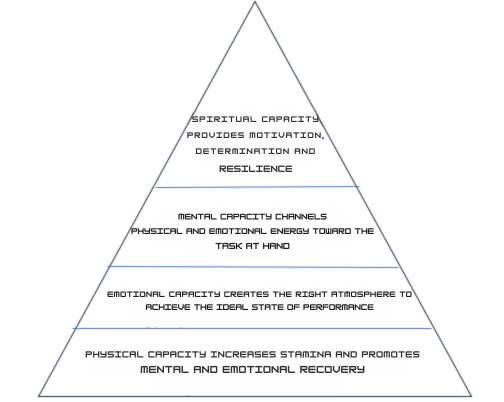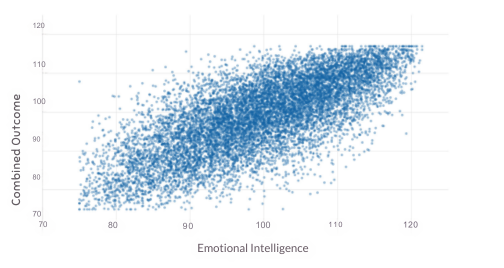Focus and goals: the relationship between emotions and performance

Performance psychologist Jim Loher and American journalist Tony Schwartz in the book “The power of full engagement” pointed out that “To be fully engaged, we must be physically excited, emotionally connected, mentally focused and spiritually aligned with a purpose beyond our own self-interest.”
The above is summarized in the so-called “Performance Pyramid,” according to which each individual must develop four capabilities to reach his or her maximum potential:

Looking at this pyramid, what role then do emotions play in supporting performance and success?
Studies conducted since the publication of Daniel Goleman’s book “Emotional Intelligence” have demonstrated and expanded the initial hypothesis, namely that of the connection of emotional intelligence to an individual’s personal and professional success. More specifically, it has been found that levels of emotional intelligence predict 50%-60% of an individual’s success (data measured with the SEI – Six Seconds Emotional Intelligence Assessment)

The diagram, by identifying with each dot a person, shows the correlation between Emotional Intelligence (abscissae) and Performance (ordinates).
Debunking, therefore, what many of us have been taught: namely, to “put our emotions aside,” studies show us that emotions, in addition to being a rich source of information, influence the way we feel and think, determining how we make decisions, process ideas, build relationships and achieve our goals.
When we try to push emotions aside, we miss key messages. Each emotion, indeed, holds an important signal, and if we neglect the wisdom of that signal, we move away from the focus needed to achieve the goal and/or sometimes we run the risk of channeling a significant amount of energy toward something that is not exactly what we want, only to find ourselves with a sense of loss wondering “Where am I going?”
People in the optimal performance condition experience a state of calm, concentration, optimism, the ability to find internal motivation, clarity of the direction in which they are moving. This is because positive emotions generate energy. Whereas emotions that are more unpleasant to experience such as fear, sadness, frustration, produce the exact opposite effect, draining energy, diverting attention (or focus) and pulling us away from the outcome or goal to be achieved.
Understanding emotions is, therefore, a strategic resource for directing our energies and choices more intentionally, and being more focused on achieving goals and/or what is really important. It helps us stay on course and focused, as well as effective even in times of difficulty!
Condividi questo articolo
Back

